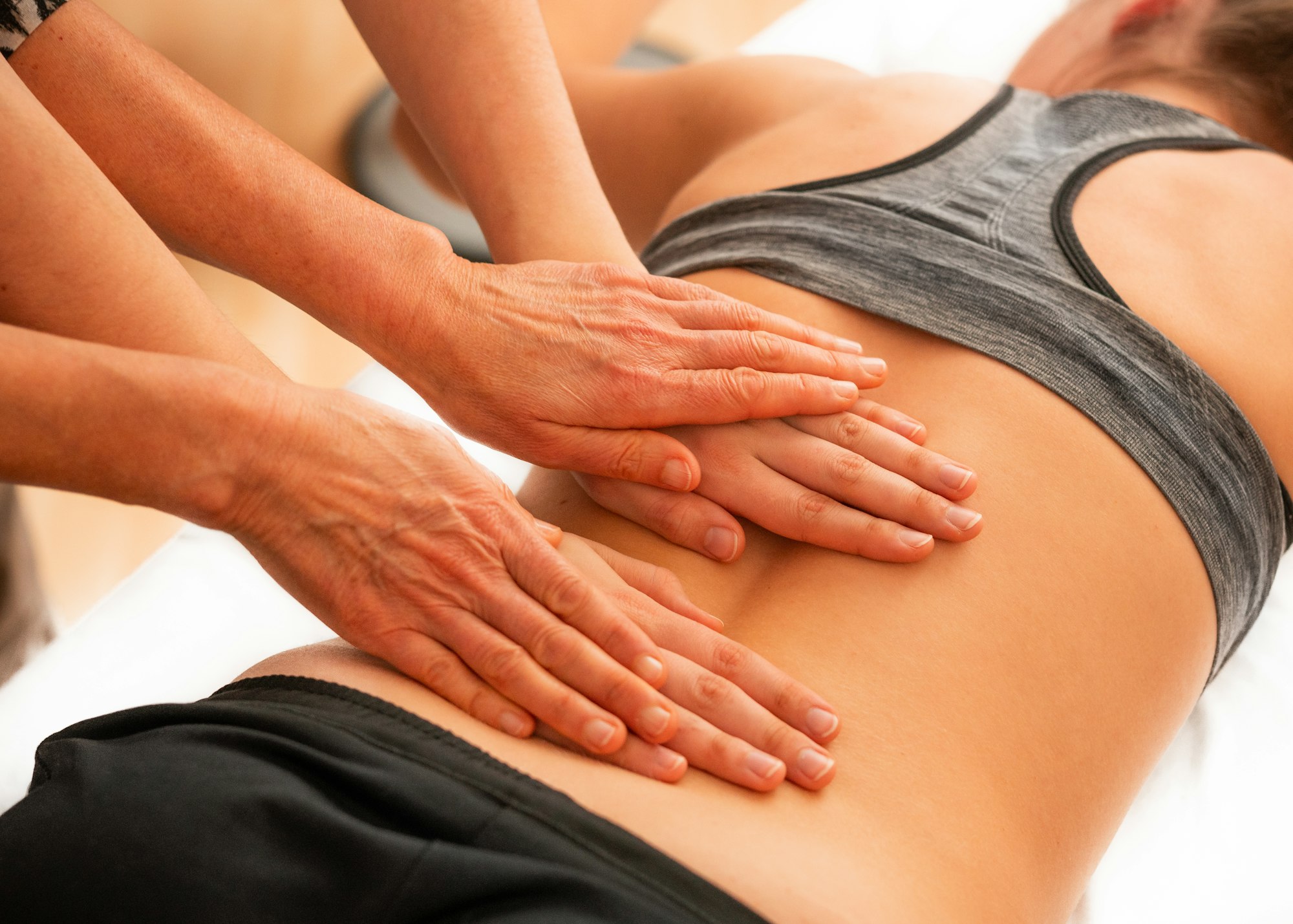Bringing a new life into the world—what a profound whirlwind! Between sudden waves of joy, aching fatigue, and the quiet questions that surface during night feeds, the postpartum weeks can feel both wondrous and overwhelming. So many new parents find themselves asking, “Is this pain normal? Will my body ever feel like itself again?” Enter postpartum osteopathy—an approach that goes far beyond simple back cracks or massages. Designed specifically for recovery after childbirth, postpartum osteopathy combines science, sensitivity, and practical daily support. Whether pelvic twinges linger, a cesarean scar feels tight, or energy just isn’t quite what it was, plenty of mothers and even partners wonder if there’s a real, holistic way to restore balance—not only in body, but in mind. Here unfolds an in-depth exploration of what postpartum osteopathy offers: From musculoskeletal healing and nervous system support, to realignment, gentle scar care, and practical tips for the demands of new parenthood.
Understanding Postpartum Osteopathy
What exactly is postpartum osteopathy?
Imagine a therapy that elegantly stitches together manual medicine, awareness of hormonal flux, and compassion for the lived realities of new parents. Postpartum osteopathy draws on gentle, precise manipulations—think of subtle mobilizations, stretch and release for muscles, and delicate encouragement for joints recovering from the expanding belly and the drama of birth. But there’s more beneath the surface: osteopathy respects the reality that birth doesn’t “end” at delivery; instead, the body’s tissues, ligaments, and bones are still adapting for weeks and even months.
- Osteopaths assess the entire musculoskeletal system—the way ligaments, muscles, joints, and connective tissues interact after months of postural change. That arch in your back, those aching hips, even that odd heaviness in the pelvis? It’s all connected.
- The care is hands-on, non-invasive and always custom-tailored. Scar tissue from C-sections or perineal tears? Manipulations can help remodel these areas, reducing restriction and tension, potentially even improving local blood flow.
- Beyond mechanics, postpartum osteopathy is anchored in supporting nervous system regulation. That means help for both physical tension and emotional overwhelm.
As an added layer, osteopaths don’t just address the mother. Some bring in assessments for newborns too, particularly around birth-related tension, feeding comfort, or postural asymmetry.
How is postpartum osteopathy different from physiotherapy, chiropractic or plain massage?
Many parents find themselves a bit confused. “Should I see a physiotherapist? Or is this something for a chiropractor?” Here’s where postpartum osteopathy sets itself apart:
- Osteopathy: Looks at the whole person—posture, internal organs, fascia, hormonal recovery. Techniques are gentle and systemic, seeking harmony and mobility across the body.
- Physiotherapy: Emphasises structured, exercise-based rehab. Great for strengthening, less for subtle alignment or internal release.
- Chiropractic: Focuses mainly on rapid adjustments to the spine and joints. The techniques can be stronger, and the philosophy centres around the nervous system and spinal alignment.
- Massage: Wonderful for soft tissue relaxation, but usually stops short of working with postural architecture or scar tissue in-depth.
In short, postpartum osteopathy is uniquely placed to restore balance after the profound transformations of pregnancy and labour, especially for those finding standard rehab a bit limited for their specific postpartum discomfort.
The Postpartum Body: Physical Changes and Common Complaints
Hormonal storm and anatomical adaptation
During pregnancy, levels of relaxin and progesterone spike, loosening ligaments to allow for an easier passage during childbirth. But these hormones don’t vanish immediately after delivery. They linger, making joints softer, sometimes leading to that “wobbly pelvis” sensation so many women report. The baby’s weight shifts your centre of gravity; kissing, bending, and cradling a newborn pulls the spine, pelvis, and ribcage in unfamiliar ways.
Muscles, previously stretched over a growing bump, may feel weak or disconnected. Sleep is interrupted. Mental fatigue rides tandem with the physical, all making recovery a multifaceted challenge.
Why can postpartum discomfort feel so varied?
Here’s a glimpse into the kaleidoscope of sensations that can shadow the early days:
- Musculoskeletal aches: Back pain, pelvic stiffness, and sore hips are not uncommon. For some, it feels like the body is adjusting to a new internal balance; for others, it’s more a persistent, dull ache.
- Pelvic heaviness: Not just a feeling—childbirth can stretch the pelvic floor and its supporting structures, making everything feel downward, even leading to pressure or minor incontinence.
- Pain after epidural: A focused throb in the lower spine, or sensitivity at the puncture site, may persist for weeks.
- Scar discomfort: Cesarean or episiotomy scars can feel tight, itchy, or pull awkwardly—sometimes long before they look healed on the surface.
- Headaches and fatigue: The toll of sleepless nights and physical adaptation can manifest as tension headaches or a sensation of “heaviness” throughout the body.
Most of these are transient, but they do benefit from sensitive, professional attention—precisely what postpartum osteopathy offers.
How Postpartum Osteopathy Supports Recovery
Restoring structure, mobility, and parity
The primary objective? Bring the body gently back to equilibrium. Osteopathic sessions often include:
- Gentle mobilisation for the pelvic joints, lower back, and sacrum, paying special attention to mobility in the lumbosacral and sacroiliac regions. This can ease that “misaligned” sensation many mothers describe.
- Targeted support for pelvic floor, abdominal wall (especially for diastasis recti—that separation of abdominal muscles often seen post-pregnancy), and key ligaments damaged or stretched in labour.
- Visceral manipulation—a delicate, hands-on technique—to address movement and settling of internal organs (bladder, intestines, uterus) displaced during pregnancy.
- Release of tension in the diaphragm and ribcage, supporting better breathing, core stability, and energy.
After cesarean delivery, osteopaths spend additional time mobilizing scar tissue, aiming to reduce adhesions and support elastic, functional healing.
Body and mind: Integrated recovery
Postpartum osteopathy recognises how physical discomfort can ripple into emotional distress—or vice versa. Each session is a time for new parents to slow down, voice concerns, and reclaim comfort in their own body. The improvements are not just anatomical: many report an easier mood, steadier energy, and a sense of “lightness” following treatment.
Methods and Approaches: What Happens During Treatment?
Manual techniques tailored to postpartum needs
A session isn’t just a “massage”. Expect a combination of:
- Soft tissue massage and gentle stretching to release muscular tension, especially in back, pelvis, and neck.
- Joint mobilisations, not as abrupt as chiropractic manipulations, to restore movement and ease pain.
- Visceral mobilisation, refining the flexibility and movement of internal organs that adjust post-pregnancy.
- Cranial osteopathy, which addresses tension through the head, spine, and nervous system using subtle touch.
Every approach is chosen in response to your specific body—whether you are weeks or months postpartum, have scars, or experience pelvic floor dysfunction.
Beyond the session: Practical daily support
A good osteopath provides more than hands-on care:
- Postural guidance—tricks for holding your baby that minimize strain, breastfeeding posture tips, ergonomic advice for carrying and lifting.
- Individualised exercises (rarely strenuous)—gentle core and pelvic floor work crafted to suit your healing stage.
- Breathing and movement techniques—to boost circulation, encourage tissue healing, and avoid overexertion.
With each insight, the aim is clear: empower parents for daily life, not just the treatment room.
Safety, Indications and Timing: When to Seek Care
Who should consider postpartum osteopathy, and when?
The beauty of postpartum osteopathy lies in its adaptability. Suitable for new mothers after both uncomplicated and complex births (vaginal or cesarean):
- Standard practice suggests waiting about 4–6 weeks postpartum, but earlier intervention is possible, especially if pain is significant or mobility is limited.
- Gentle approaches are always used after surgical births or when tissues are still healing.
- Only active infection, open wounds, or unhealed bleeding stand as temporary red flags—otherwise, the therapy is exceedingly safe.
Partners and the Scope of Osteopathic Support
Caring for the caregivers
Parenthood transforms more than one body. Sleep deprivation, awkward lifting while supporting the mother, and stress-induced musculoskeletal pain don’t just touch new mothers. Partners, too, may carry an infant for long hours or adapt to new routines.
An osteopathic session for partners offers both physical relief and practical advice about safe, supportive movement—for baby care, feeding, and even shared moments of physical recovery.
What to Expect from a Postpartum Osteopathy Session
Your visit, step by step
Expect a warm, in-depth conversation about your pregnancy, birth process, and any persistent symptoms.
- The assessment involves careful observation: evaluating posture, mobility, muscle tone, and scars.
- Manual therapy addresses tense or restricted areas, focusing effort where discomfort, stiffness, or scars interfere with daily routines.
Most describe leaving the session with tangible relief—lighter steps, less pain, renewed ease in movement and, for many, a refreshed sense of self.
Frequency and duration
Initial sessions may be weekly, especially if symptoms are intense or mobility limited. As recovery advances, spacing out appointments is the norm. Postpartum osteopathy often complements pelvic floor or abdominal rehab programs and psychological support, offering an integrated safety net.
Which Symptoms Respond to Postpartum Osteopathy?
Targeted relief and whole-body support
From stubborn lower back pain to unresolved pelvic heaviness, the scope is wide:
- Discomfort in the pelvis, abdomen, or lower back
- Tension headaches linked to muscle imbalance or postural overload
- Scar restriction, whether from cesarean, episiotomy, or epidural site
- Loss of core strength and unresolved diastasis recti
- Signs of pelvic floor dysfunction: pressure, mild incontinence, altered sensation
Correcting these issues often leads to better tissue healing, confidence in movement, and the freedom to re-engage with new family routines.
Nurturing the nervous system
By recalibrating the body’s alignment and nurturing the nervous system, postpartum osteopathy shifts the dial on physical and emotional wellness. Scientific literature suggests that techniques targeting musculoskeletal harmony can dampen stress responses—particularly meaningful for sleep-deprived, emotionally taxed parents.
Insights from Research and Clinical Science
Evidence matters
Recent studies highlight the benefits of postpartum osteopathy for mothers dealing with low back or pelvic pain—reducing discomfort and improving day-to-day functioning. The evidence around scar tissue and pelvic floor disorders is promising too, though as always, more robust trials will continue to fine-tune recommendations.
High satisfaction rates stem not merely from symptom relief, but also from the holistic, empathetic delivery of care—responding to the lived experience, not just the diagnosis.
Choosing a Postpartum Osteopathy Practitioner
What makes a good osteopath for postpartum care?
Look for:
- Credentials with a recognised medical or osteopathic board.
- Experience in postpartum and women’s health: not all osteopaths hold this speciality.
- Willingness to answer questions about their approach, experience, and what feels best for your unique recovery.
Referrals from doctors, midwives, or other parents can be invaluable, but trust your comfort—this is your recovery, after all.
Long-term Wellness and Preventive Strategies
Preventing future pain, fostering ongoing health
Regular postpartum osteopathy doesn’t stop at fixing aches. It’s about:
- Ongoing alignment checks: essential for preventing persistent postural problems.
- Encouraging healthy movement habits and exercises that adapt as your child—and demands—grow.
- Supporting scar tissue and pelvic floor health well into future pregnancies or active parenting.
- Preparing women who hope for more children with assessments to optimise the strength and mobility of the musculoskeletal system.
Prevention, in this domain, is as much about resilience as remedy.
Key Takeaways
- Postpartum osteopathy wraps holistic, evidence-based, and sensitive support into one package, addressing not only pain and dysfunction, but the complicated adaptations of new parenthood.
- Gentle manual therapy, guided exercises, posture tips, and scar tissue care add up to real, practical benefits—for both mothers and their partners.
- Thoughtfully adapted, non-invasive, and timed to your healing, postpartum osteopathy is suitable after all types of birth.
- Consistent sessions can enhance physical and emotional recovery, supporting your confidence and comfort as a parent.
- Ample research supports its effectiveness, especially for low back and pelvic pain, making it an asset in modern postpartum recovery.
- For additional support and to explore bespoke advice or child health questionnaires, explore the application Heloa—a companion with free, reliable, and tailored resources.
Questions Parents Ask
Is postpartum osteopathy only for mothers, or do fathers also get benefits?
Certainly, the primary spotlight falls on mothers, but partners, who often find their own bodies strained by the realities of new parenthood, can definitely benefit. Lifting babies, awkward sleeping positions, or simply the additional stress can create tension and aches. These sessions help ease musculoskeletal issues and teach supportive movements that make daily routines smoother.
How soon after childbirth is it okay to book a postpartum osteopathy session?
Generally, new parents might consider visiting an osteopath around 4–6 weeks after delivery. However, this depends quite a bit on each person’s healing journey—if birth was complicated or a cesarean occurred, discussing timing with your healthcare provider or an experienced postpartum osteopath is wise. The key is comfort—both physical and emotional.
Does postpartum osteopathy make a difference for emotional balance as well as physical symptoms?
Absolutely. The interplay between musculoskeletal health and emotional state is real. Many mothers notice that, aside from less pain, their mood is lighter, and stress feels more manageable after sessions. This approach understands that the path to recovery after birth is as much about mental well-being as it is about bones and muscles.
What types of symptoms can postpartum osteopathy help with specifically?
Common areas of improvement include lower back or pelvic pain, pelvic floor weakness, headaches tied to tension or posture, abdominal separation, and scar discomfort. It’s a broad spectrum—each treatment crafted in response to your particular needs.
How does postpartum osteopathy fit with other therapies—like pelvic physiotherapy or counselling?
Harmoniously! Many families blend osteopathic care with pelvic or core rehab, as well as talking therapies or group support. The goal is coordinated, well-rounded recovery—no single method has to stand alone.
Can postpartum osteopathy help after a C-section or only after vaginal deliveries?
Both, certainly. Scar tissue management and restoring mobility are just as valuable for mothers recovering from cesarean delivery. The therapy is simply adapted, staying gentle and mindful of healing incisions.
Is it safe to try postpartum osteopathy while breastfeeding?
Yes—osteopathic techniques are non-invasive and tailored so as not to interfere with breastfeeding or routine newborn care. You can attend sessions at your pace and always discuss any specific concerns with your practitioner.
Where can parents find trustworthy information or support about postpartum osteopathy?
The best place to start is with recognised, registered practitioners—ask your midwife, doctor, or other new parents for recommendations. For reliable, on-demand information and health guidance tailored to new parents, the application Heloa provides free access to trusted resources and screening tools.









